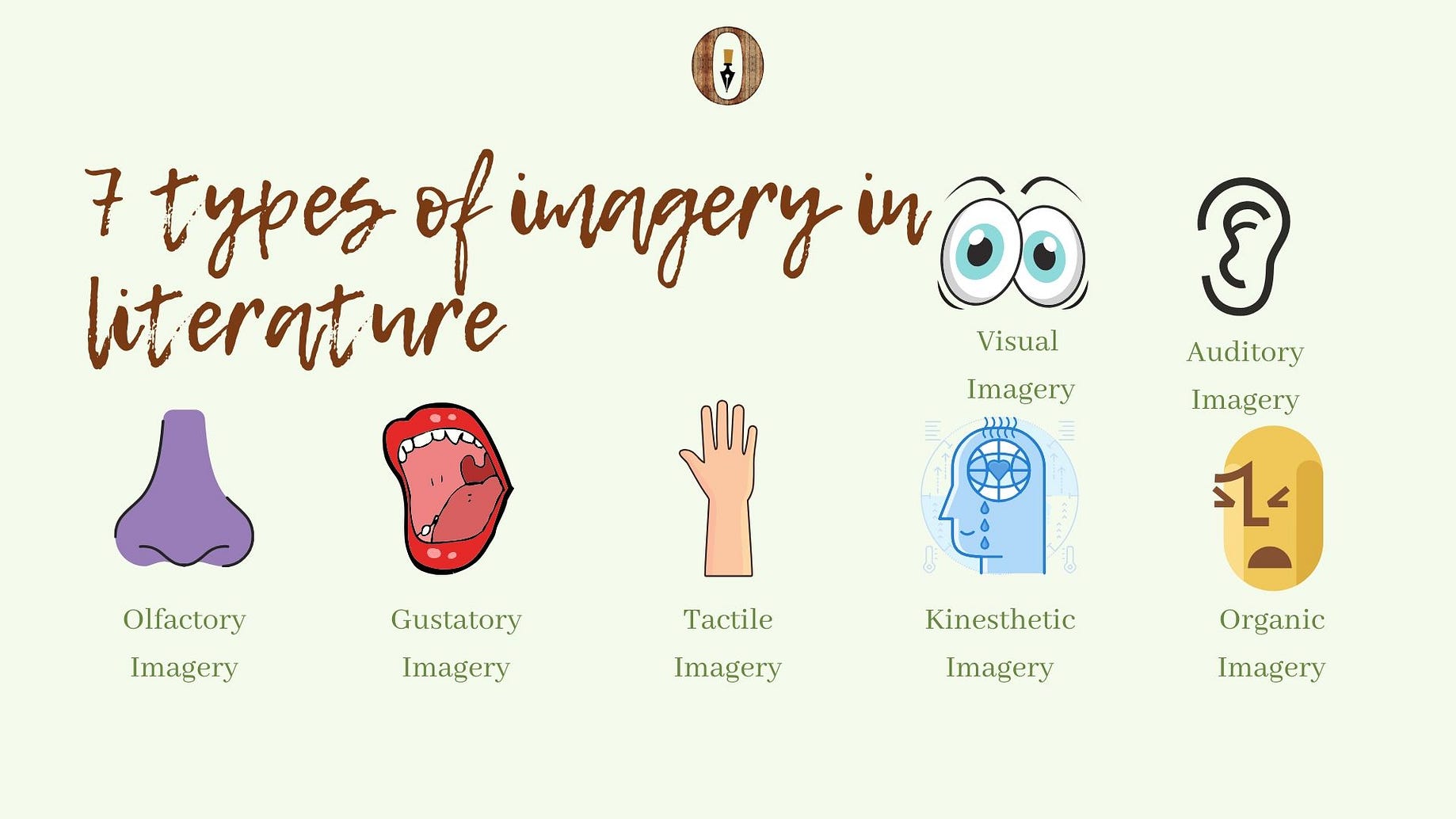


Auditory ImageryĪuditory imagery engages our sense of hearing. However, in the last example, figurative language is used to compare the room to a disaster area. Notice that literal descriptive language is mainly used in these examples.

Personification is when objects or animals are given human-like qualities.Įxample: Opportunity knocked at his door. MetaphorĪ metaphor compares two familiar, but unrelated, things to suggest a likeness between them.Īn onomatopoeia is a word that sounds like the action it describes.Įxample: The soda fizzed as I poured it into the glass. Here are some simple definitions and examples of these literary devices: 1. The writer of imagery has options: They can include just literal descriptive language or figurative language or both.įigurative language is a “tool” to be used in imagery and other literary devices, such as metaphors, onomatopoeia, personification, similes, and hyperbole, to describe something. Imagery is not automatically the same thing as figurative language. Imagery and figurative language add depth and color to your storytelling, marketing messages, or blog posts, making your writing inviting and alluring to readers. Instead, it is a figurative comparison of his unkind or cruel actions to being as hard and cold as a stone. “The grass was green, and the flowers were red.”įigurative imagery uses descriptive language that means something different than or goes beyond the literal definition of the words, often through exaggeration, comparison, or symbolism.įor example, “He has a heart of stone” does not mean his heart is literally made of stone. Literal imagery uses descriptive words that mean exactly what they say. Imagery can contain either literal or figurative language. This literary device describes objects, actions, or ideas while providing readers with a sensory experience that pulls them into a story, allowing them to relate to the characters and better understand the narrative. Writers use either literal or figurative language to help readers picture or imagine a scene by engaging their senses and evoking emotions. Imagery is the art of creating mental images through descriptive words.

Seven common types of imagery (with examples).Five additional literary devices that use figurative language.The difference between imagery and figurative language.In this post, you’ll get some great examples of imagery, and you’ll also learn: It’s an amazing literary device that tickles your readers’ senses, grabs their attention, and draws them into your story.Īnd you can find out more about it right here! If you’re looking to add some oomph to your writing, these imagery examples are just what you need.


 0 kommentar(er)
0 kommentar(er)
